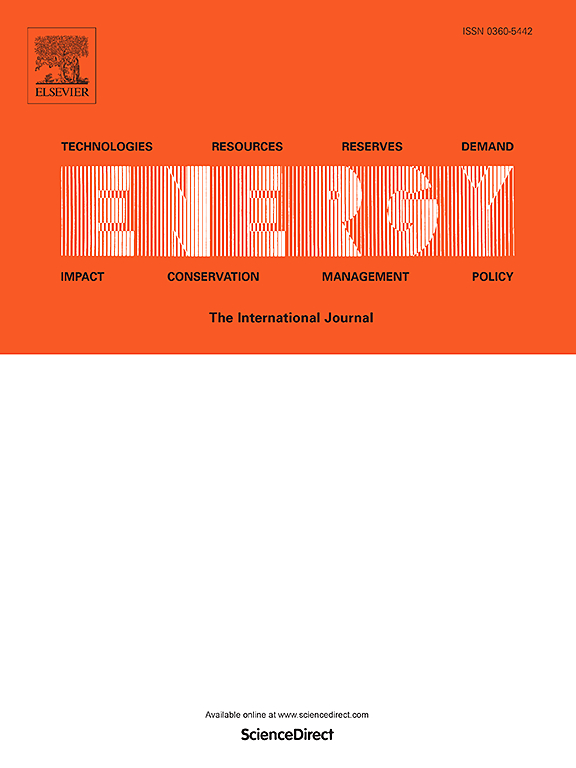耦合方法和凹窝结构对PCM胶囊填充床熔化特性的数值研究
IF 9
1区 工程技术
Q1 ENERGY & FUELS
引用次数: 0
摘要
在太阳能利用中,相变材料(PCM)球形胶囊填充床系统可以有效地缓解间歇性和波动问题。然而,流体与胶囊之间的对流换热对储热有显著影响,不同处理方法对相变过程的影响仍需深入研究。本文采用数值方法分析了恒温、顺序耦合和双向耦合三种方法对熔化过程的影响。结果表明,不同的处理方法对熔速有显著影响。恒温耦合法的熔化速度最快,而顺序耦合法和双向耦合法由于对流换热的增强,随着进口速度的增加,熔化速度加快。不同的耦合方式下,液体组分和流型分布不同,双向耦合方式下,液体PCM在迎风侧的分布比顺序耦合方式更均匀。此外,在所有处理方法下,韧窝结构都加速了熔化速度,但增强程度不同:与双向耦合相比,顺序耦合放大了增强效果,而恒温处理则减弱了增强效果。最后,建立了完全熔化时间的相关公式,平均误差为2.4%。本文章由计算机程序翻译,如有差异,请以英文原文为准。
Numerical investigation of coupling approaches and dimpled structure on melting characteristics in PCM capsule packed-bed
In solar energy utilization, phase change material (PCM) spherical capsule packed-bed systems can effectively mitigate intermittency and fluctuation issues. However, convective heat transfer between the fluid and capsules significantly influences thermal storage, and the impact of different treatment methods on the phase-change process still requires in-depth investigation. This study employs numerical methods to analyze the effects of constant temperature, sequential coupling and bidirectional coupling approaches on the melting process. Results show that different treatment methods have a significant impact on the melting rate. The constant temperature method exhibits the fastest melting rate, while in sequential and bidirectional coupling methods, the melting rate accelerates with increasing inlet velocity due to enhanced convective heat transfer. The liquid fraction and flow pattern distribution vary depending on the method, with the bidirectional coupling method showing more uniform distribution of liquid PCM on the windward side compared to sequential coupling. Additionally, the dimpled structure accelerates the melting rate under all treatment methods, but the extent of enhancement differs: sequential coupling amplifies the enhancement effect compared to bidirectional coupling, while the constant temperature method weakens it. Finally, a correlation formula for the complete melting time is established, with an average error of 2.4 %.
求助全文
通过发布文献求助,成功后即可免费获取论文全文。
去求助
来源期刊

Energy
工程技术-能源与燃料
CiteScore
15.30
自引率
14.40%
发文量
0
审稿时长
14.2 weeks
期刊介绍:
Energy is a multidisciplinary, international journal that publishes research and analysis in the field of energy engineering. Our aim is to become a leading peer-reviewed platform and a trusted source of information for energy-related topics.
The journal covers a range of areas including mechanical engineering, thermal sciences, and energy analysis. We are particularly interested in research on energy modelling, prediction, integrated energy systems, planning, and management.
Additionally, we welcome papers on energy conservation, efficiency, biomass and bioenergy, renewable energy, electricity supply and demand, energy storage, buildings, and economic and policy issues. These topics should align with our broader multidisciplinary focus.
 求助内容:
求助内容: 应助结果提醒方式:
应助结果提醒方式:


